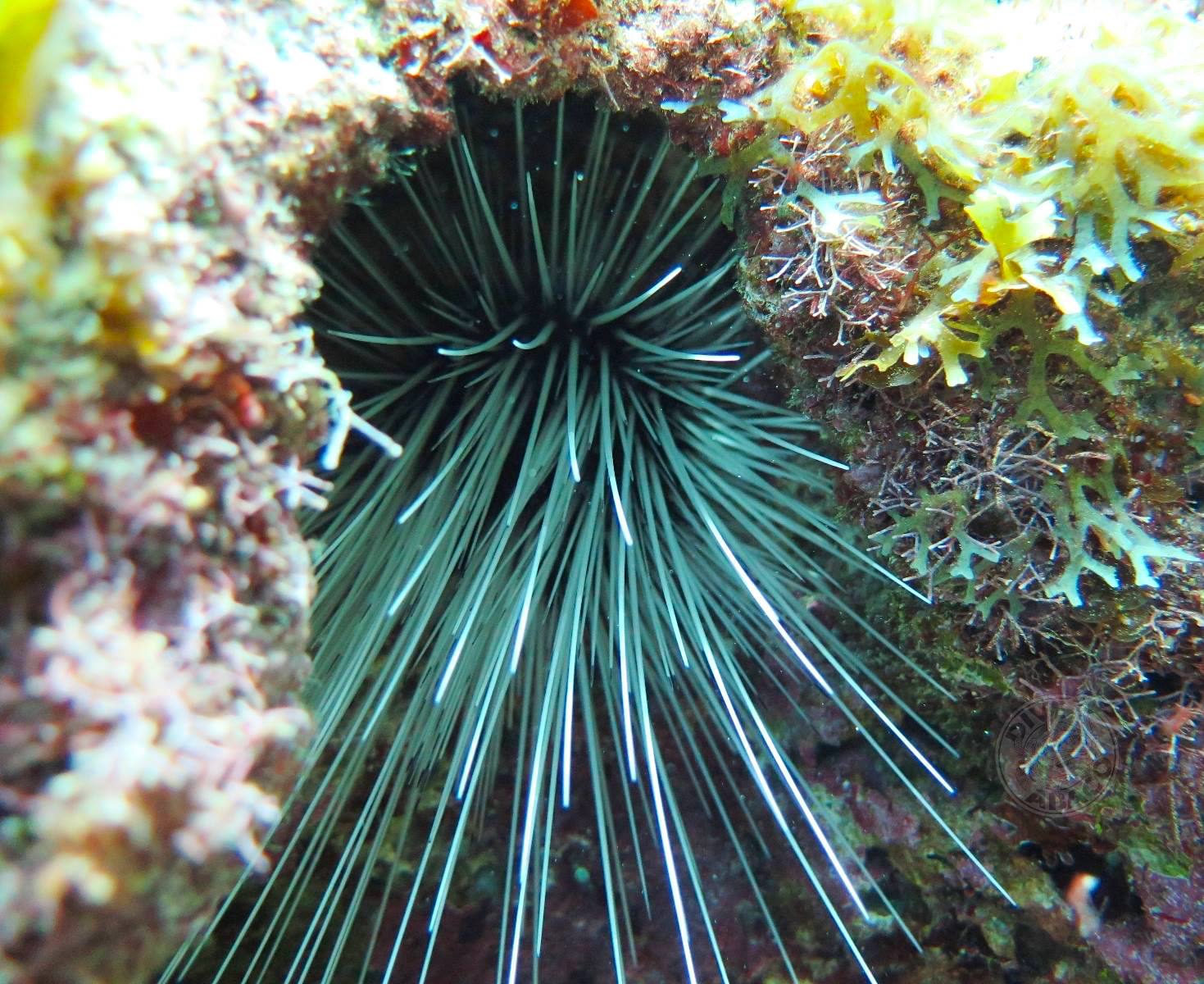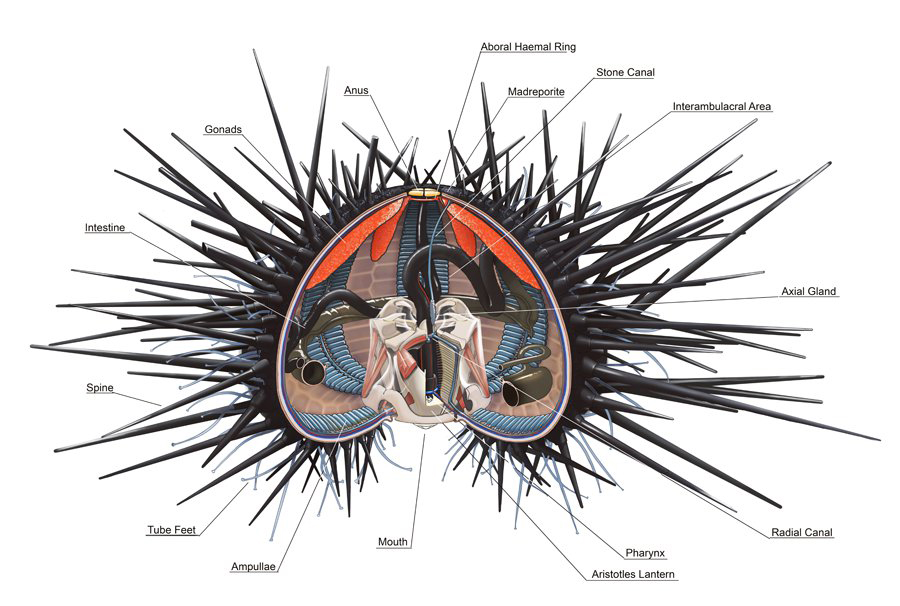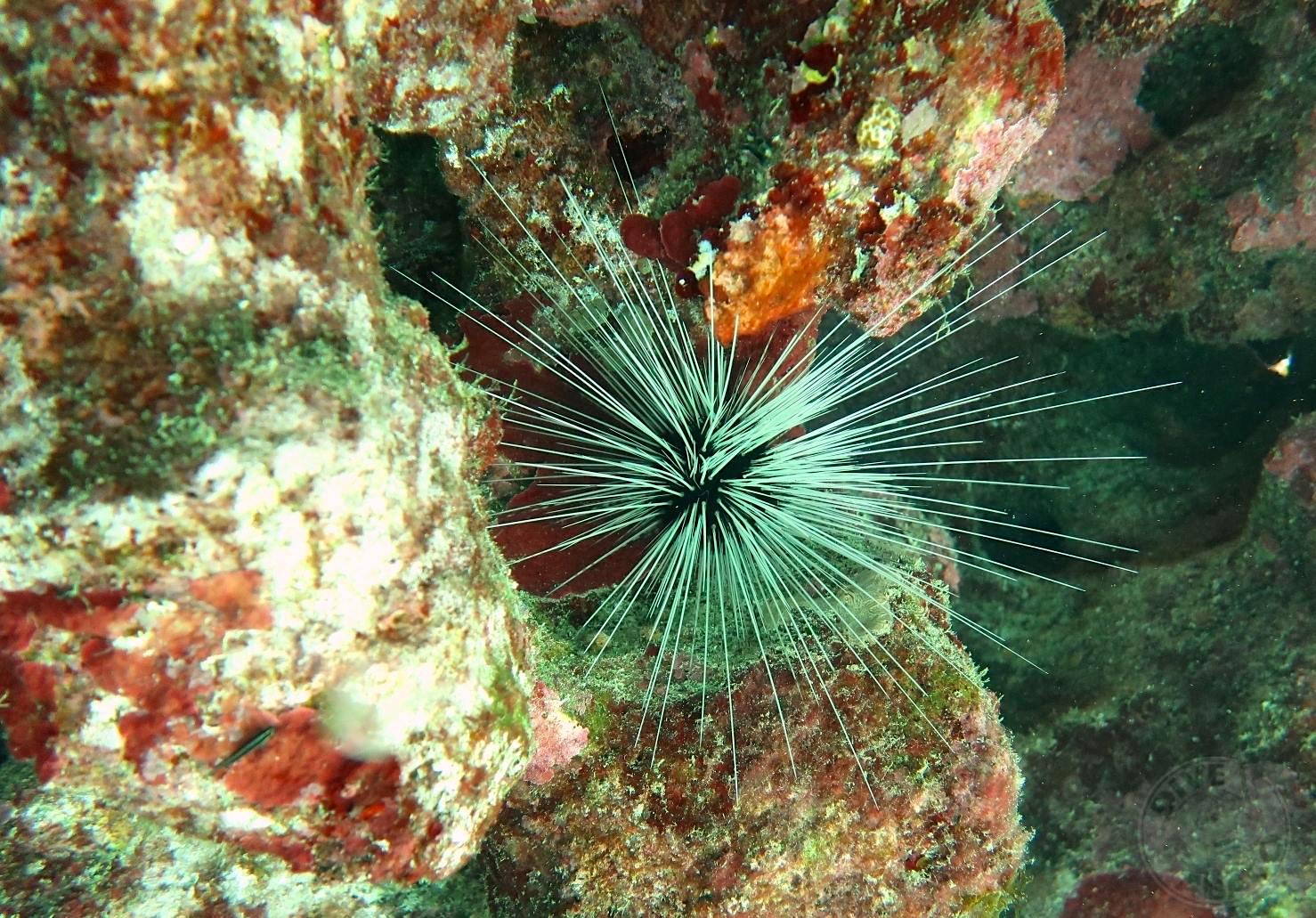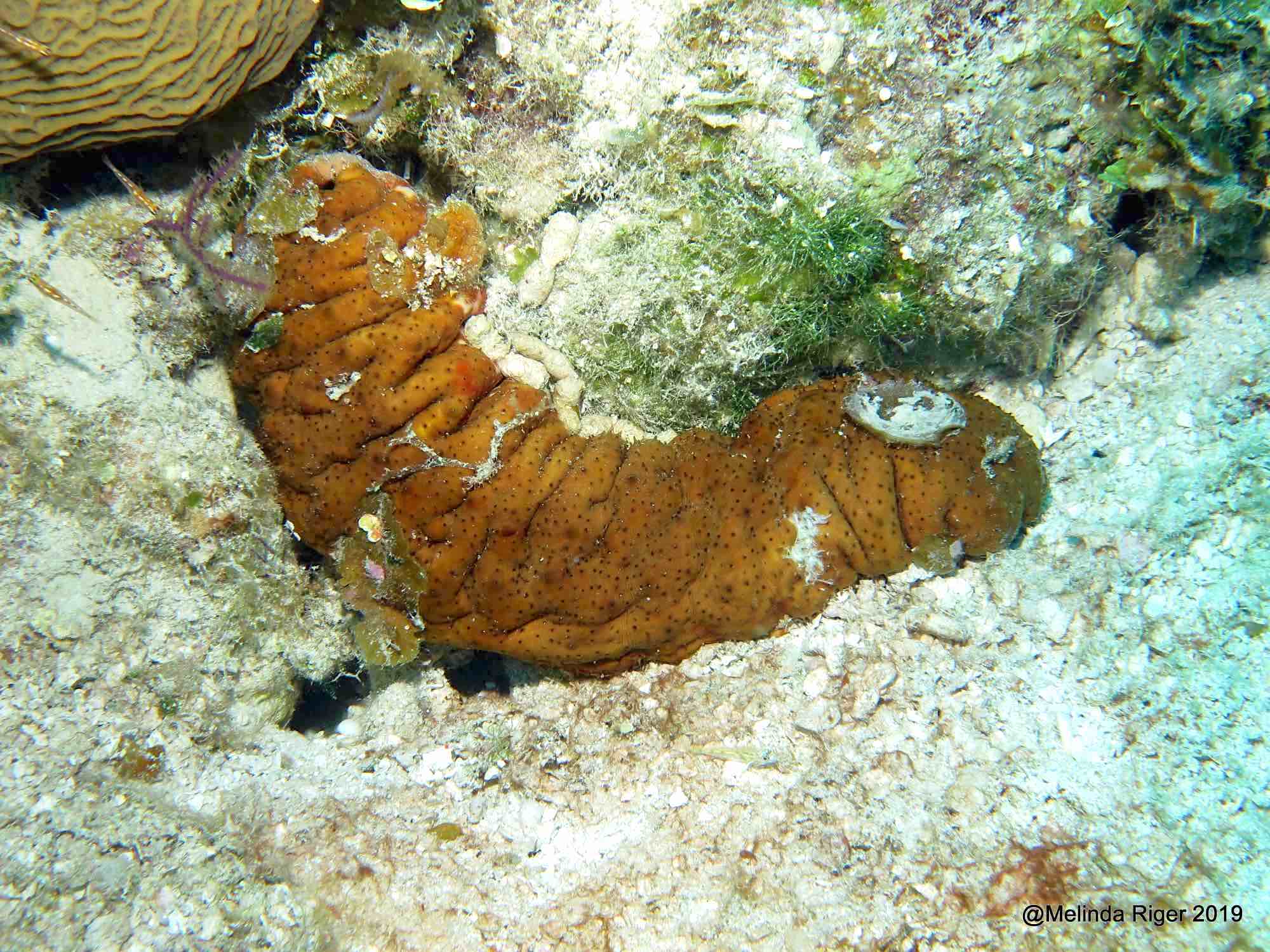URCHIN RESEARCHIN’: SEA HEDGEHOGS OF THE REEF
The long-spined sea urchin Diadema antillarum featured in this post is one of those creatures that handily offers its USP in its name, so you know what you are dealing with. Something prickly, for a start. These are creatures of the reef, and many places in the Caribbean and in the western Atlantic generally sustain healthy populations.
These animals are essentially herbivores, and their value to vulnerable coral reefs cannot be overstated. Where there is a healthy population of these urchins, the reef will be kept clean from smothering algae by their methodical grazing. They also eat sea grass.
HOW DO THE SPINES OF DIFFERENT KINDS OF URCHIN COMPARE?
CAN YOU GIVE US A TEST, PLEASE?
A BIT ABOUT SYMMETRY
Sea urchins are born with bilateral symmetry – in effect, you could fold one in half. If you wear gloves. As they grow to adulthood, they retain symmetry but develop so-called ‘fivefold symmetry’, rather as if an orange contained 5 equal-sized segments. The graphic above gives a good idea of how the interior is arranged inside the segments.
A FEW FACTS TO HAND DOWN TO YOUR CHILDREN
- Urchin fossil records date the species back to the Ordivician period c 40m years ago
- In the ’90s the population was decimated and still has not recovered fully
- Urchins feel stress: a bad sign that the spines here are white rather than black
- Urchins are not only warm water creatures: some kinds live in polar regions
- Urchins are of particular use in scientific research, including genome studies
- Some urchins end up in aquariums / aquaria, where I doubt the algae is so tasty
- Kindest not to prod or tread on them
- Their nearest relative (surprisingly) is said to be the Sea Cucumber
ARE THEY EDIBLE?
They are eaten in some parts of the world, but only where the gonads and roe are considered a delicacy. Personally, I could leave them or leave them.
CREDITS: Melinda Rogers / Dive Abaco (1, 2, 3, 6, 9) taken Abaco; Melinda Riger / G B Scuba (4, 10, 11) taken Grand Bahama; Keith Salvesen / Rolling Harbour (7, 8) taken Abaco; Wiki graphic (5) CC . RESEARCH Fred Riger for detailed information; otherwise magpie pickings… This is an archive post











